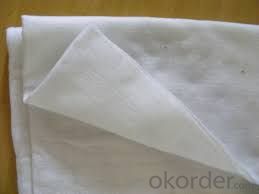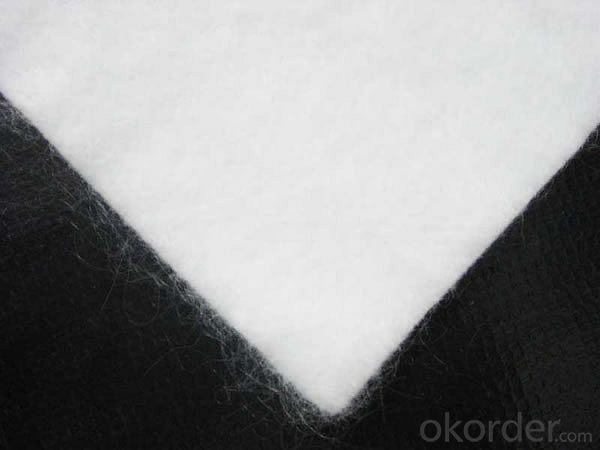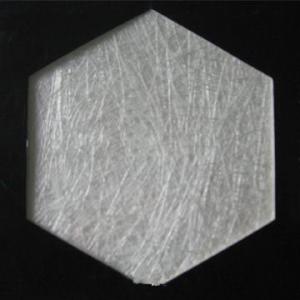Bidim Geotextil Non Woven Geotextile Per M2 High Quality In Real Estates
- Loading Port:
- China main port
- Payment Terms:
- TT OR LC
- Min Order Qty:
- 1000 m²
- Supply Capability:
- 1000000 m²/month
OKorder Service Pledge
OKorder Financial Service
You Might Also Like
Features and Benefits
Nonwoven structure, providing excellent surface friction and built-in elongation
Effective filter, with tight pore size (AOS=70) and high permittivity
High tensile strength, with excellent puncture and tear resistance
Range from 3.2 oz/sy (109g/sm) – 16.0 oz/sy (543g/sm)
Thick structure, allowing cushioning and lateral gas and liquid transmission
Geotextile uses:
Filter: Geotextile fabric is an excellent filtering medium as it allows fluid to pass through the fabric yet retains fine particles, as you would see in an aggy drain. Great for wrapping perforated pipes and rock to create a path for fluid to pass though yet keep the fines out. Another large use in Australia is in the construction of a landfill cell, where filter geotextile sits atop the filtration rock separating the waste material placed on top allowing the leachate to pass through down to the liner.
Separate: Geotextile when used as a separation layer prevents two different fill materials such as aggregate and soil from combining. When used correctly the geotextile will increase the life span of the civil project, allowing the two separate layers to perform as designed for longer.
Protection: Geotextile when used as a protection layer acts as a cushioning barrier between the geosynthetic lining system and other layers of the dam or landfill cell. Generally the larger mass rolls of geotextile provide the best cushioning protection. As a protection barrier it helps prevent puncturing and leaks from external forces coming into contact with the liner.
Our Service
1.On a regular basis or as per your request,we entrust national testing agencies to conduct quality inspections
2. Strictly in accordance with the ISO9001-2008 international quality system standard,we monitor and manage the whole process throughout production,quality testing,and measurement to ensure product quality
3. For quality-related construction delay or substandard construction(except for damage or losses due to customer’s responsibility or irresistible natural disasters),we have refunding,replacement,and repair services.We will respond to customers’ feedbacks on quality issues within 24 hours.
4.In order to provide customers with comprehensive technical support,we will provide technical and other related information upon request in a timely manner.
5.In required,we will appoint specialized technicians to the construction site to give technical trainings to construction people,and offer technical guidance throughout the whole construction process.
6.For damage due to shipment and delivery,after we receive the complaint,we will check the issure through provided pictures and videos.If our responsibility is confirmed,we wil offer free replacement.
7.When the construction is completed,as your request,our technical staff may participate in the final acceptance.
FAQ:
Q: What kind of payments does jenor support?
A: T/T, L/C, Cash are accepted.
Q: Do you charge for the samples?
A: Accordeing to our company policy, the samples are free, we only charge the freight fee. And we will return the freight fee during the next order.
Q: Can you produce according to customers' design?
A: Sure, we are professional manufacturer, OEM and ODM are both welcome.
Q: Do you have other products?
A: Yes, please check the pictures:

- Q: 200g / m2 geotextile how to enter the inspection test
- In accordance with national standards for testing ah
- Q: Can geotextiles be used in tunnel construction?
- Yes, geotextiles can be used in tunnel construction. Geotextiles are often used as reinforcement materials to improve the stability and strength of tunnel walls. They help to prevent soil erosion, control water flow, and provide additional support to the tunnel structure.
- Q: Is the polyester nonwoven fabric geotextile?
- Not geotextile. Polyester non-woven fabrics: mainly used for construction, roof waterproof as a base cloth, attached to the above sand, cement, etc., to prevent the role of sand leakage. Nonwovens are often used in construction and are a measure to prevent cracks. Geotextile manufacturers, for your answer
- Q: How are geotextiles maintained?
- Geotextiles are typically low-maintenance materials that require minimal upkeep. However, to ensure their longevity and effectiveness, geotextiles should be regularly inspected for any signs of damage or degradation caused by environmental factors or heavy loads. If any issues are identified, appropriate repairs or replacements should be carried out promptly. Additionally, periodic cleaning may be necessary to remove any accumulated debris that could potentially hinder the geotextile's performance. Overall, proper maintenance of geotextiles involves routine inspection, timely repairs, and occasional cleaning to preserve their functionality and lifespan.
- Q: The amount of geotextile drainage of the drainage pipe, as well as the amount of gravel block ye count
- Are you talking about plastic blinds? do you need? I specialize in producing geotextile materials
- Q: What glue can clay stickers glue?
- Geotextiles generally do not need to glue glue, because the geotextile is made of polyester staple fiber acupuncture, the product itself has a lot of small pores, the use of glue bonding not only a waste of glue, bonding effect is not good. Geotextile in the project is generally used in the hand-type sewing machine suture, suture geotextile not only glue glue than the geotextile solid and reliable, and the construction of geotextile suture is also much higher than the construction of glue with geotextile Speed, while the cost of sewing geotextile is also much lower than the cost of glue bonding geotextile. Generally in the project to play the effect of impervious geomembrane, composite geomembrane (also known as composite geotextile) can use glue bonding. Adhesive glue can be purchased in the geomembrane manufacturer, of course, you can also buy in the local building materials market, waterproof plastic or KS geomembrane special glue. These two glue can also be used to bond geotextiles.
- Q: Bentonite waterproof blanket and geotextile pond construction which is good
- The best is the quality of HDPE culture film, I professional production, wish smooth
- Q: How do geotextiles improve the performance of shorelines?
- Geotextiles improve the performance of shorelines by providing erosion control, stabilizing the soil, and enhancing drainage. They act as a barrier that prevents soil erosion and helps to retain sediment, reducing the impact of waves and currents on the shoreline. Geotextiles also improve the stability of the soil by distributing the load and reducing the effects of settlement. Additionally, they enhance drainage by allowing water to pass through, preventing the buildup of hydrostatic pressure that can further damage the shoreline.
- Q: What is the length of the lap in the geotextile in the tunnel?
- Lap 20 cm Huazhi geotextile material answer
- Q: What are the maintenance requirements for geotextile installations?
- The maintenance requirements for geotextile installations typically involve regular inspections to ensure proper functioning and longevity. This may include removing any accumulated debris or sediment that could hinder its performance, checking for any signs of damage or wear, and addressing any issues promptly to prevent further deterioration. Additionally, periodic testing and evaluation of the geotextile's performance may be necessary to ensure it is meeting the desired objectives.
Send your message to us
Bidim Geotextil Non Woven Geotextile Per M2 High Quality In Real Estates
- Loading Port:
- China main port
- Payment Terms:
- TT OR LC
- Min Order Qty:
- 1000 m²
- Supply Capability:
- 1000000 m²/month
OKorder Service Pledge
OKorder Financial Service
Similar products
Hot products
Hot Searches
Related keywords
































